Cabin repair can be a major task if regular log home maintenance has been neglected. This introduction to the causes of cabin deterioration will save you money and show you how to have trouble-free log home living. Some of the main causes for a log home to need repair are storm damage, fire damage, insect damage, failure of the finish (sealant, stain, or varnish), incomplete information on how to maintain your log home or simple neglect.
Jump to:
Cabin Care
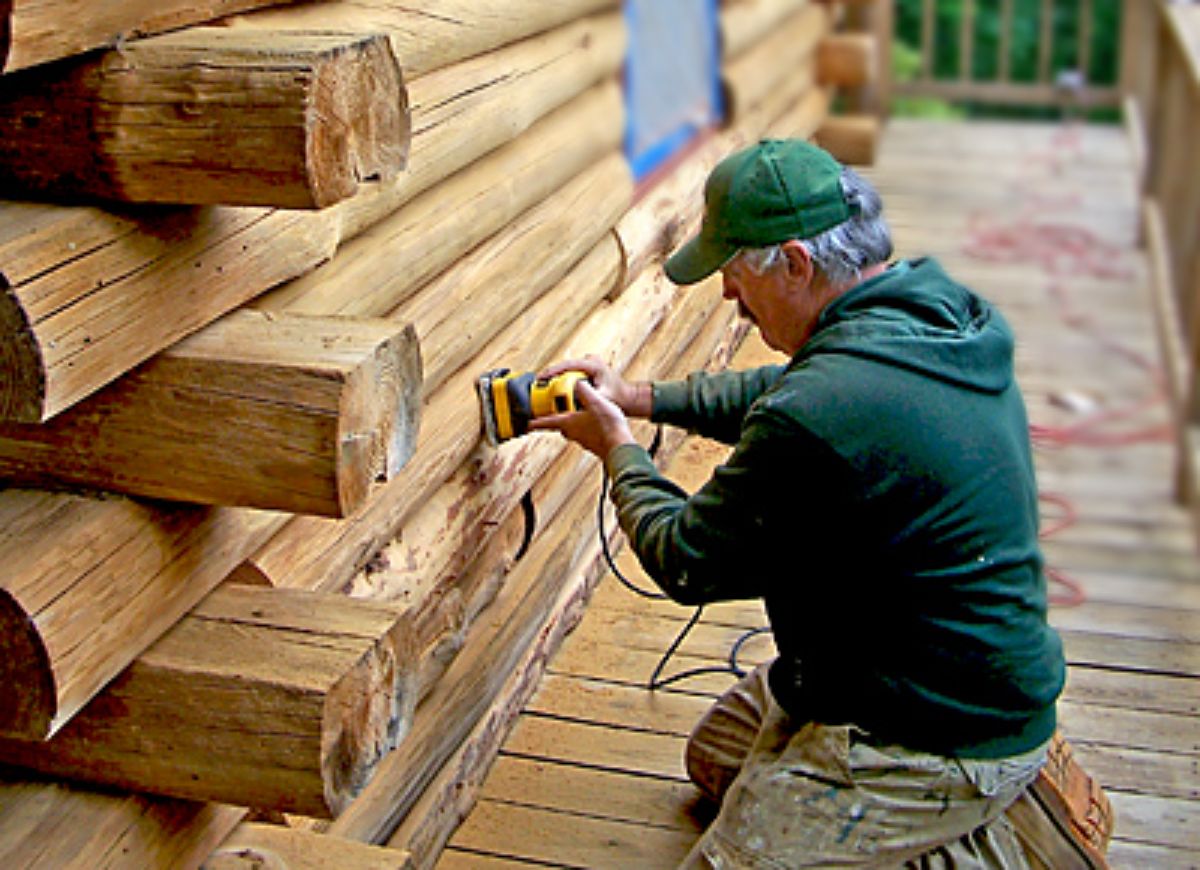
Are you contemplating a cabin restoration or log repair project? It’s important to educate yourself on what may be involved to get a realistic estimate of your time, money and resources.
This introduction to cabin restoration will give you a background on the causes of wood decay, as well as remedies for improper building practices that may have led to your log home’s deterioration.
Any home requires regular care and attention and log homes have their own unique cabin maintenance requirements. If you build a log cabin or buy one that’s in good shape, you can easily keep it in top shape with regular maintenance, providing, of course, that the cabin design was correct in the first place.
Problems arise when log homes are left alone for too long and the inevitable decay sets in. We’ll look into how we can stop the decline, reverse the damage done and complete a cabin repair you can be proud of.
Enemy of Log Homes
Many people think that the primary issue with log homes would be fire, but massive logs and timbers are actually quite difficult to get burning – not that we needn’t be careful with open fireplaces, outdoor kitchens and other sources of ignition.
But the real enemy of log homes is not fire, it’s water. If we can keep the logs dry and well-ventilated they will last indefinitely. The best way to do this is with large overhangs on the roof. This gets back to having a proper cabin design to begin with, because this can be very hard to remedy later.
Recommended overhangs by ILBA (International Log Builders Association) call for one foot of overhang for every eight feet of log wall height. If you have to replace your roof or open it up for insulation, consider adding longer eave and gable overhangs.
In particular, structural insulated panels, or SIPs, are great for the large expanses of a typical cabin roof. Their rigid nature allows you to run them long to provide shade and protection for your logs and they provide excellent insulation and a tight roof shell.
Every crack, joint and crevice must be sealed to maintain the air-tight and water-tight integrity of the log cabin and prevent water or bugs from getting into the spaces. It’s much cheaper and easier to prevent the damage than to face an entire log home restoration project simply because the proper building techniques were not followed in the first place.
Proper cabin preservation would provide a barrier of protection for the logs themselves with a good log stain, sealant or finish that allows the wood to breathe naturally while resisting water penetration.
- Premium Residential Performance: Easy-to-assemble and easy-to-start with its Honda GC190 Premium residential engine, the MegaShot power washer is great for cleaning decks, patios, outdoor furniture, house siding, and prepping home exteriors for painting.Unit Dimensions: L: 21” x W:24” x H: 34”
- Power and Durability: A powerful, reliable, maintenance-free OEM Technologies axial cam pump delivers 3200 PSI at 2.5 GPM and includes thermal relief to prevent overheating; Welded steel frame construction with a powder-coated finish adds durability
- Lightweight and Portable: The compact design is lightweight and small enough to be easily transported by one person; 10-inch premium pneumatic tires offer ease of maneuverability across various terrain and uneven ground
- Includes Quality Simpson Accessories: MorFlex ¼-inch x 25-feet high-pressure hose is non-marring, flexible and abrasion-resistant; 5 Quick connect nozzle tips: 0°, 15°, 25°, 40° and Soap for any cleaning tasks; Ergonomic spray gun and 16-inch steel wand/lance
- Important Notes: 49-state compliant; Does not ship to California; Keep max fuel level 1/2 Inch below bottom of filler neck to avoid spillage; All pressure washers are 100% functionally tested in factory and may contain minimum residual fuel/oil or fuel odor
Cabin repairs can be kept to a minimum by keeping mold and mildew cleaned from your logs using a mixture of bleach, water and TSP. Scrub your logs with this mixture and a soft brush, making sure to thoroughly rinse off and let dry for a day or two.
Wash the entire cabin clean of dirt and cobwebs with a pressure washer, being careful to use a pressure setting not greater than 500 psi and use a pressure washer tip of 15° - 20°. For more details on cleaning the cabin see our page on cabin restoration.
Bugs, Insects and Critters
Being constructed of an organic material, log homes are a natural haven for bugs of all sorts. Left to themselves these pests can cause long-term damage to your logs and timbers and leave you with a costly cabin rehab. Here are some of the most common pests and what you can do about them:
- Carpenter Ants: These are generally found in decayed wood. Carpenter ants build nests but don’t eat the wood. Use an ant spray or powder to control.
- Borer Bees or Carpenter Bees: These large, dark-colored bees are identified by the remarkably round ½” entry holes found in logs, trim and fascia that look like they were drilled with a power tool. The female carpenter bees have stingers and lay the eggs, while the males swarm the area to protect the females but don’t have stingers. The carpenter bees drill a tunnel at 90 degrees to the entry hole and use the same nest year after year, often lengthening the tunnel each time. It’s not enough to caulk up the hole as they’re simply push right out. You have to kill the bee inside before filling the hole.
- Termites: Termites eat wood and convert the cellulose or wood fibers into sugar. Since termites eat the wood from the inside out they can be difficult to spot and the first evidence of termites is often the distinctive tunnels found on foundation walls. They are searching for wood to eat and tunnel through the ground and up walls to get there. For a small area you can spray them with Spectracide foaming spray or a termiticide such as Termidor. For a large infestation it’s best to turn to the pros and call in an exterminator before it turns into a major cabin repair bill.
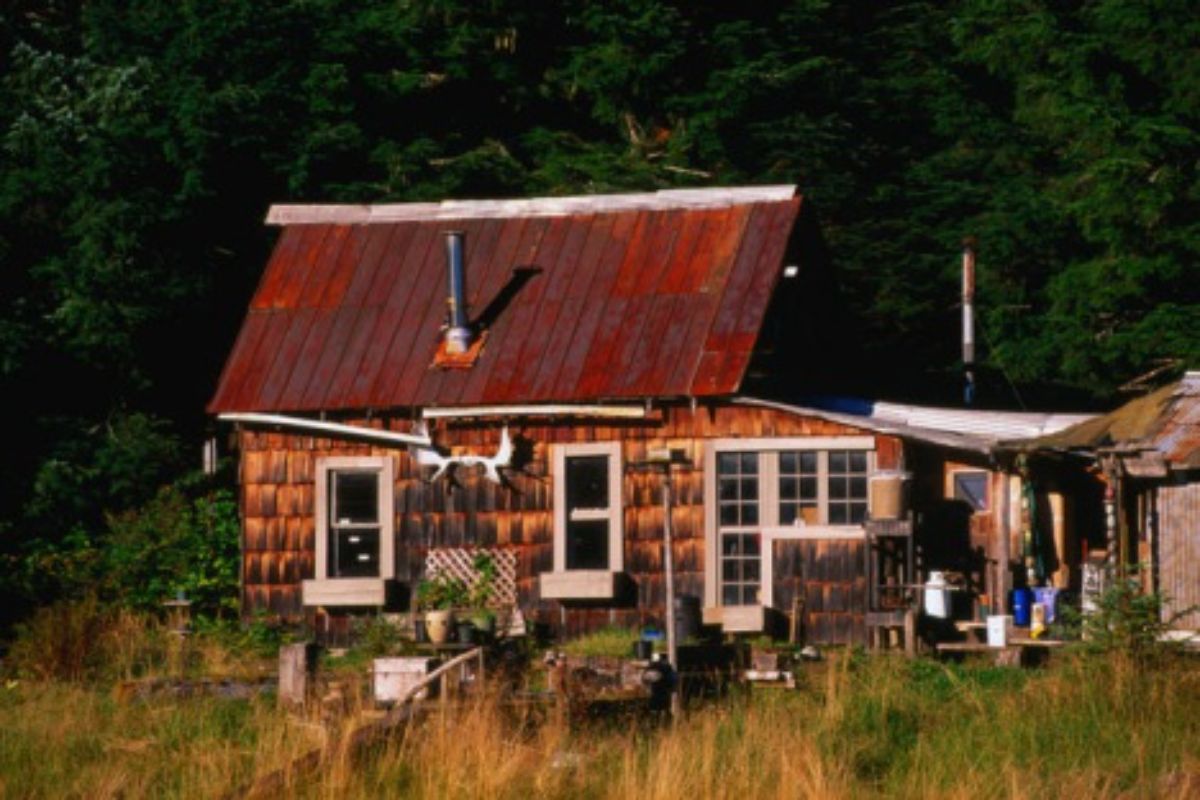
- Ladybugs or Asian lady beetles: These don’t do any damage but they can be annoying. Ladybugs hibernate inside in the winter where it’s warm; then return outside in the spring. They will come back next year because they leave a trail of pheromones to find their way back. It’s best to not agitate them in the house because they can release a smelly, yellow substance that can stain. The best approach is to vacuum them up -- but first tape a nylon stocking inside your vacuum wand to contain the ladybugs. Don’t just leave them in your vacuum cleaner or they will climb right back out. The best long-term solution is to seal up your log home tightly using log caulk and expandable foam for the crevices and apply an insecticide around windows and doors.
- Ultra flexible and elastic - won't crack or pull away
- Go-to product for log home manufacturers throughout the US - trusted product
- Water-based for easy application and clean-up
- Freeze-thaw stable: OK to leave in your truck overnight
- Must be used with GREAT STUFF PRO Series Dispensing Gun, sold separately.Comes in a can that’s reusable for up to 30 days, minimizing waste (cans of straw-applied gaps & cracks can be used one time only)
- Recognized as a fireblock; inhibits the spread of smoke & flames through concealed spaces
- Minimal expanding for general purpose building envelope air sealing
- Fills gaps up to 3" and expands to take the shape of cracks and voids
- Forms permanent, airtight and water-resistant bond to vinyl, wood and metal surfaces
- Wasps and Hornets: You must locate the nest and treat the entire area; in fact, killing just one within 15 feet of their nest will release a scent that attracts more wasps. Use an organic insecticide to kill them, then remove the nest.
- Powderpost Beetle: Evidence of these is often a powdery substance and a group of tiny, pin-like, round exit holes. These can re-infest and cause long-term damage. Use an appropriate spray such as Tim-Bor to eliminate.
- Flat-headed Borer or Longhorned beetle: These can be evidenced by larger round or oval exit holes. They generally do not re-infest so their damage is limited to their holes which can be caulked up.
Tools for Cabin Repair and Restoration
Cabin repair projects require their own set of unique tools and techniques. In addition to regular log home building tools, you may need to utilize some of these specialty items to properly address the restoration issues:
- Abrasive Disc Brush: Osborn’s ATB Uni-Lok Quick Change Brushes feature a permanently mounted ¼” shank for quick, convenient attachment to CNC machines, automatic equipment, portable tools, and robotic cells.
- Quick Change Brush: The unique composite design allows for “touching” of surrounding raised surfaces without harming the part or the brush. Designed and tested for longevity and uniformity.
- 120 Grit Brush: These small diameter brushes feature premium-quality nylon filament with choice of Round Crimped Silicon Carbide or Round Ceramic abrasive to serve a variety of deburring needs.
- Applications: This silicon carbide brush is great for deburring and edge radiusing space restricted and recessed areas, larger bosses on cylinder heads, sensor ports on turbine engine cases and larger pockets in turbine engine combustion cases.
- Disc Brush Specifications: 1-1/2" Diameter, 0.028" Fill Diameter, 120 Grit Straight Silicon Carbide, 1-3/8" Trim Length, 4500 Max RPM.
- Osborn brushes – Osborn brushes are silicon carbide-impregnated nylon bristles which act as an abrasive. They are buffing brushes, not for sanding but are designed to smooth the surface of the wood without removing the entire top layer. Use them at low RPM on an angle grinder, around 1800 RPM. Spin them too fast and they will wear out quickly. Good for removing mill glaze, removing fuzzing or feathering of the wood after pressure washing, and for smoothing cob-blasted wood surfaces during cabin repair.
- 20 Year Anniversary Edition of the Lumber Wizard Woodworking Metal Detector
- Detects nails, screws, wire, bullets and other metal objects inside recycled wood
- Auto Tuning and 6"-wide scanning area for faster scans - Quick, one-handed operation
- One-year warranty; 9-volt battery (not included). *ALWAYS USE A NEW 9 VOLT BATTERY.
- Laser Line Visual Indicator. Also detects Stainless Steel, Titanium and other elements.
- Wizard metal detectors – These small handheld metal detectors are great for finding embedded bits of steel like old nails, spikes, wire, etc. These are especially good at preserving blades if you’re going to be using a saw or planer.
- Measuring Range 6-45%
- Reference Scale 0-99
- Building materials such as gypsum, plaster, drywall etc.
- Build in calibration for wood
- Lignomat moisture meter – These handheld moisture meters are the most accurate and reliable way to determine the moisture content of your logs. The moisture level of logs in log home walls will vary by climate zone, but a typical range is between 10% to 14% moisture content, with a high end of 18%. Moisture content over 18% can cause mold and mildew to grow under log finishes and log coatings can peel or blister.
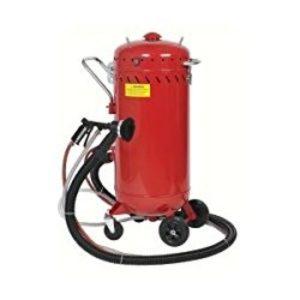
- Media Abrasive Blaster - Abrasive blasting with ground corn cobs produces quick results without the risk of damage from using a harsher media such as sand. It's lightweight and biodegradable. This is recommended for large jobs or logs with lots of stain to remove.
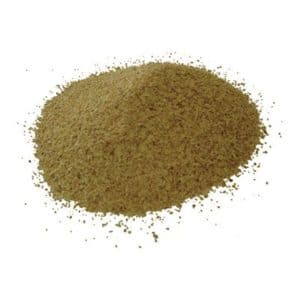
- Corn cob blasting media - This is a low-abrasive way to clean your logs without tearing them up. The natural media can be recovered or simply left to decompose and be eaten.
Log Home Repair Resources
Further information on cabin repair can be found on our Cabin Library page, with many books on cabin restoration and log home building.
For an in-depth look at cabin restoration and repair, read the National Parks Service Preservation Brief #26: “The Preservation and Repair of Historic Log Buildings” by Bruce D. Bomberger.
See definitions and explanations of terms used in cabin rehab in our cabin restoration glossary.
Cabin repair may involve a small project or a complete overhaul and rehab. Once you understand the unique issues and techniques involved, you can adequately plan your approach and budget your resources.
More Cabin Restoration Pages:
How to Renovate a Heritage Log Cabin Interior - DIY Style See how one family learned how to renovate a heritage log cabin interior - DIY style in British Columbia.
Restoring a Heritage Log Cabin Read this account of restoring a heritage log cabin as a labor of love in British Columbia.
Log Repair, Log Restoration, and Replacement There are many unique log repair techniques for your cabin restoration.
Cabin Restoration Tips to Make Your Log Home Look New Again Use these cabin restoration tips to protect and preserve your log home investment.
Cabin Restoration Glossary – A Lexicon of Log Home Repair This cabin restoration glossary provides a lexicon of terms used in log home repair, cabin rehab, and log home preservation to help you understand the concepts of cabin restoration.

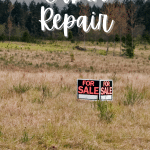

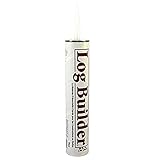




Scott Graham
I have a log cabin built 100 or so years ago that has been neglected with many of the log ends rotted from water damage. The chinking is in good condition, joints three or more inches wide. (Tried unsuccessfully to include pics). I’m looking to restore it and convert it to a wood shop yet lack an understanding of some construction elements and repair techniques. Roof and windows are fine. I’m also considering a covered porch that would also protect log ends from the elements. Any hope for help? I’m north of Detroit, Michigan. Thanks in advance…